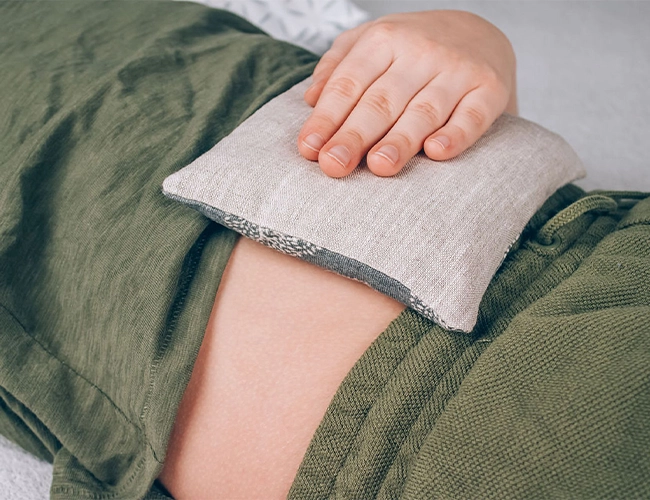What is an oblique injury
Oblique muscle injuries refer to injuries or tears to muscle groups located on both sides of the body and extending to the abdomen and chest.
The oblique muscles can be divided into the external oblique muscles and the internal oblique muscles, which play a key role in twisting, bending and supporting trunk movements.

There are three reasons for oblique muscle injury:
1. Irregular movements: In the case of excessive rotation or twisting of the oblique muscle, there is a high probability that the oblique muscle will be strained, especially in the case of insufficient warm-up
2. Sudden intense exercise: For example, when you are in a non-exercise state, suddenly turn, bend or lift heavy objects quickly, which may also lead to oblique muscle tears
3. Long-term repetition of an action: When you exercise, repeat the same action for a long time or irregular movement, you may not find problems in a short time, but the oblique muscle injury does continue, which will lead to chronic injury.

What are the symptoms of oblique muscle injury:
1. Local pain: You can twist or bend the body, feel the abdomen or waist sides, whether you feel pain
2. Swelling and stasis: Observe whether the skin surface on both sides of the abdomen or waist has blood stasis or swelling, if there is one, it may have caused serious tears
3. Limited movement: When you feel pain when doing some torso movements, you can’t perform normally, such as twisting or bending
What to do if you pulled your oblique
When you have identified an oblique muscle strain, there are a number of measures you should take to help reduce your symptoms and promote recovery:
1. Take immediate breaks
When you have an oblique injury, you should immediately stop what you are doing or training to avoid aggravating the injury with movements such as lifting heavy objects, twisting or bending. And after stopping the movement or training, the muscles can be fully relaxed and recovered, which is a great help for milder symptoms
2. Apply ice
After an oblique injury, ice can be applied immediately with a towel or cloth wrapped in an ice pack for 15-20 minutes at a time, with an interval of 2 to 3 hours. Ice can effectively help reduce swelling and pain.
But be careful not to let the ice pack directly contact the skin, to avoid causing skin frostbite

3. Apply a bandage
Because after the oblique muscle injury, we try to reduce the force of the injured part, you can use elastic bandages to gently wrap the injured part to provide support, pay attention not to wrap too tight, so as to avoid affecting the blood circulation
4. Elevate the body parts of your hands
When swelling is found in the abdomen or lower back, if possible, the injured area can be elevated above the level of the heart to help reduce swelling
5. Medication
If the location of the wound is too painful, pain relievers such as ibuprofen or Acetaminophen can help relieve pain and inflammation.
If the injured area is already bleeding or bleeding, then you should avoid using over-the-counter steroid anti-inflammatory drugs (such as aspirin), because these drugs may aggravate the bleeding and aggravate the injury
6. Seek medical help
When the pain is not relieved by the previous methods or the injured area becomes more serious, such as more swelling or increased blood stasis, you should seek medical attention as soon as possible.

Can i use exercise bike after oblique muscle injury
When you have an oblique injury, it is not recommended that you use an exercise bike, because a careless mistake in the process can affect the recovery or aggravate the injury. But if you still want to use a stationary bike, then you need to consider your current situation:
1. Recently injured
For the first few days after the injury, you should choose to rest and avoid any activities that may aggravate the injury, including exercise bikes
2. Recovery period
The recovery period means that the pain at the current injury site has been significantly relieved, and there is no obvious swelling or other serious symptoms, so light activities can be gradually resumed. Exercise bikes can be used as a low-intensity form of aerobic exercise for moderate exercise.
When using the exercise bike, pay attention to maintain the correct posture, avoid excessive twisting or bending the waist, strictly control the exercise time, and avoid additional pressure on the oblique muscle

3. After full recovery
After recovery, you can gradually increase the use time and intensity of the exercise bike, but you still need to pay attention to avoid sudden movements or excessive training to prevent recurrence
In addition to the use of exercise bikes, you can also cooperate with some mild lifting and strengthening training for the core muscle group to increase the strength of the core muscle group and promote the recovery effect
4. Consult a doctor or professional
If you are not sure whether it is suitable for you to use an exercise bike, it is recommended that you consult a doctor or physical therapist who will give you more professional advice based on your specific situation.

